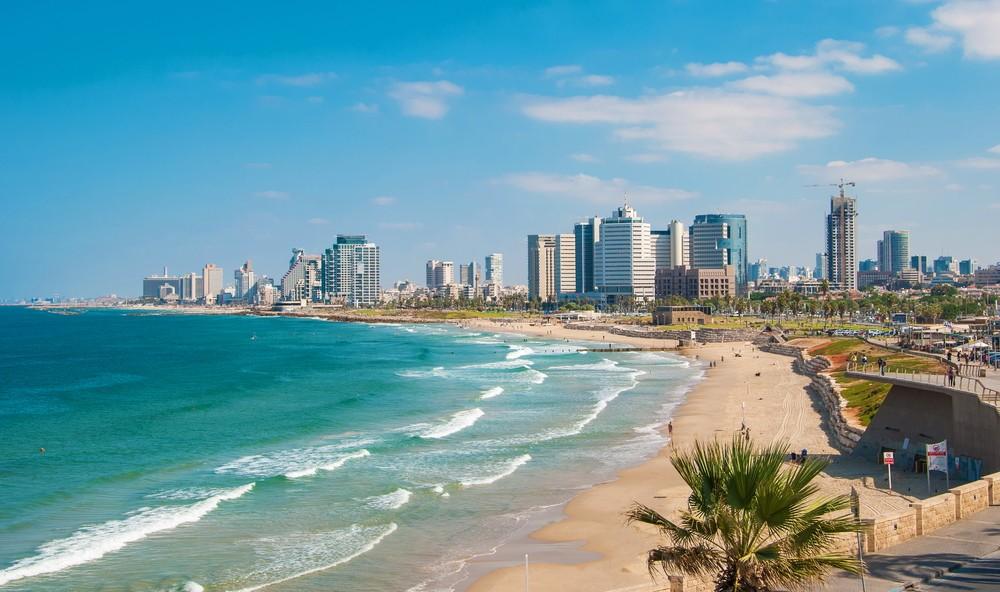In the land of the Bible, one cannot get away from religion, because the people of Israel live in a very narrow area that has become home to three faiths. Christians, Jews and Muslims regard the Temple Mount of Jerusalem as the navel of the world and the origin of all being. For centuries, this city has been the destination of countless pilgrims, even if, like the Crusaders, they did not always come with good intentions. “You shall be called Israel. I will give the land to you, and to your generation after you.” According to tradition, this was God’s word and his choice fell on a land between the Jordan River and the Mediterranean Sea. It was here that Jesus worked and died according to the Christian faith. And here Muhammad went to Allah’s paradise. Anyone who visits Israel walks on historical paths and is confronted with unique testimonies of history.

The independent state of Israel was proclaimed on May 14, 1948, establishing a homeland for the Jewish people on the soil of Palestine. Since then, Israel has suffered a history that is as eventful as it is fraught with problems. It continues to this day, because the parties to the conflict live behind a wall of hatred and mistrust. Four denominations consider the country their ancestral homeland: Jews, Muslims, Christians and Druze – separated by the Bible and the Koran. But all faiths have one thing in common – the traditions are an important part of their everyday life.
As befits such a historic city, Jerusalem has numerous museums. If you want to delve deep into history and culture, you should visit the Israel Museum not far from the Knesset. Among other things, the legendary rolls of the Dead Sea and the oldest model of a sailing ship are kept here. It is said to be four thousand years old. The history of the city also comes alive in the museum in David’s Tower, a part of the old town wall. Yad Vashem is the official memorial for the victims of the Holocaust. Here are thousands of documents and testimonies on the history of the suffering of the Jews.

The Holy City with the Via Dolorosa and the Church of the Holy Sepulchre as well as neighboring Bethlehem with the Grotto of the Nativity of Jesus are tourist highlights. But it’s not just the religious sites that make Jerusalem a destination for vacationers from all over the world. There are vibrant markets and modern shopping malls in the centre and the Talpiot district with its trendy discos and excellent restaurants.
Quite a few unorthodox residents of Tel Aviv consider Jerusalem to be an ancient open-air museum, which sounds very disparaging. But this city with its old port of Jaffa is something like the counterpoint to Jerusalem. With its beautiful boulevards, it presents itself as modern and young. And it probably plays a subordinate role for Tel Aviv that the city has hardly any sights worth mentioning. The metropolis on the Mediterranean wants to be cosmopolitan and presents itself to holidaymakers on four so-called “Orange Routes”. The most beautiful examples of Bauhaus architecture rise up on Rothschild Boulevard.
The “bathroom” of Israel is located on the north coast – between Tel Aviv and the border with Lebanon. One of the most popular seaside resorts is Netanya, and if you want to avoid the hustle and bustle there, you will find some quiet and little-visited bays in Caesarea. South of the amphitheatre, holidaymakers can rent a kibbutz holiday village there or start a sailing trip from here. The “Hanging Gardens” in the port city of Haifa are considered a symbol of peace and a place of silence. On the site is the Bahia World Center for the study of the sacred texts.
The Dead Sea, with its enormous salt content, is a healing bath for body and soul. Two million years ago, the sea was formed in a bizarre landscape and in a place steeped in history. In nearby Qumran, the writings from the third century BC were found in a rock massif.
Travel information Israel
| Capital | Jerusalem |
|---|---|
| Form of government | parliamentary republic parliamentary democracy |
| Currency | New (Israeli) Shekel (ILS) |
| Area | Heartland: approx. 22,380 km² |
| Population | Heartland: approx. 8,368,400 (2015) |
| Languages | Ivrit (Hebrew) Arabic |
| Electricity grid | 230 volts, 50 Hz |
| Area code | +972 |
| Time zone | UTC+2 UTC+3 (Daylight Saving Time) |


